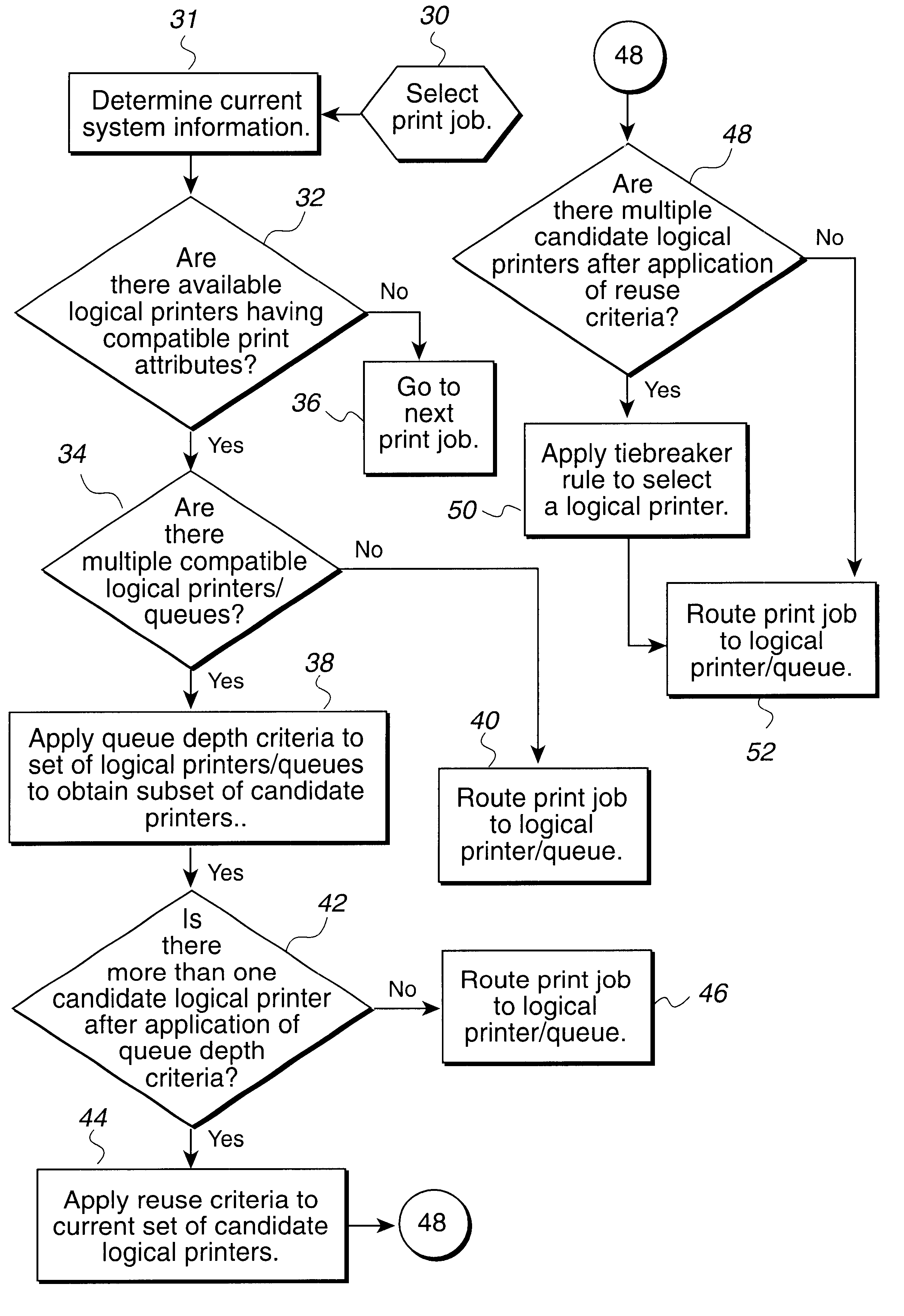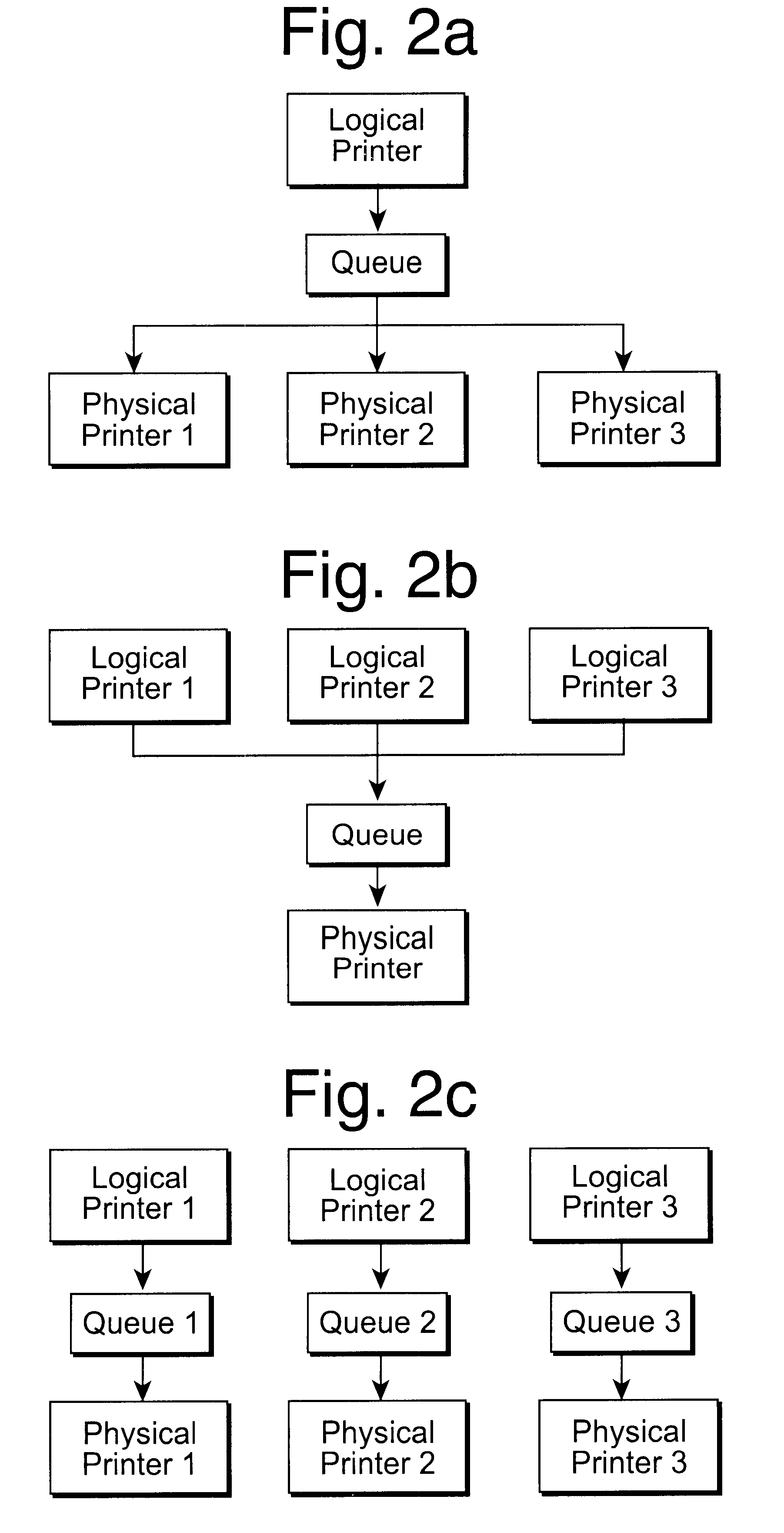Rule based selection criteria for controlling print job distribution
a selection criteria and print job technology, applied in the direction of digital output to print units, instruments, digital computers, etc., can solve the problems of not being able to efficiently route print jobs to optimize throughput, printing jobs in the network may not be able to process, and take several hours to convert a large pdl print file to its rip version,
- Summary
- Abstract
- Description
- Claims
- Application Information
AI Technical Summary
Benefits of technology
Problems solved by technology
Method used
Image
Examples
Embodiment Construction
To overcome the limitations in the prior art described above, preferred embodiments disclose a method and system for routing print jobs to one of a plurality of printers. After providing a print job, a set of printers capable of printing the print job is determined. The set of printers is queried to determine status information thereon. A criterion is then applied to the status information for the set of printers to determine a subset of printers. The determined subset is dependent upon the determined status information. A printer is selected from the subset and the print job is routed to the selected printer.
In further embodiments, printers are organized according to print queues, wherein each print queue routes print jobs to at least one associated printer. In such case, the print queues are processed and the criterion are applied to the queues to determine a subset of print queues. The print job is then routed to a print queue, which then routes the print job to a printer associa...
PUM
 Login to View More
Login to View More Abstract
Description
Claims
Application Information
 Login to View More
Login to View More - R&D
- Intellectual Property
- Life Sciences
- Materials
- Tech Scout
- Unparalleled Data Quality
- Higher Quality Content
- 60% Fewer Hallucinations
Browse by: Latest US Patents, China's latest patents, Technical Efficacy Thesaurus, Application Domain, Technology Topic, Popular Technical Reports.
© 2025 PatSnap. All rights reserved.Legal|Privacy policy|Modern Slavery Act Transparency Statement|Sitemap|About US| Contact US: help@patsnap.com



